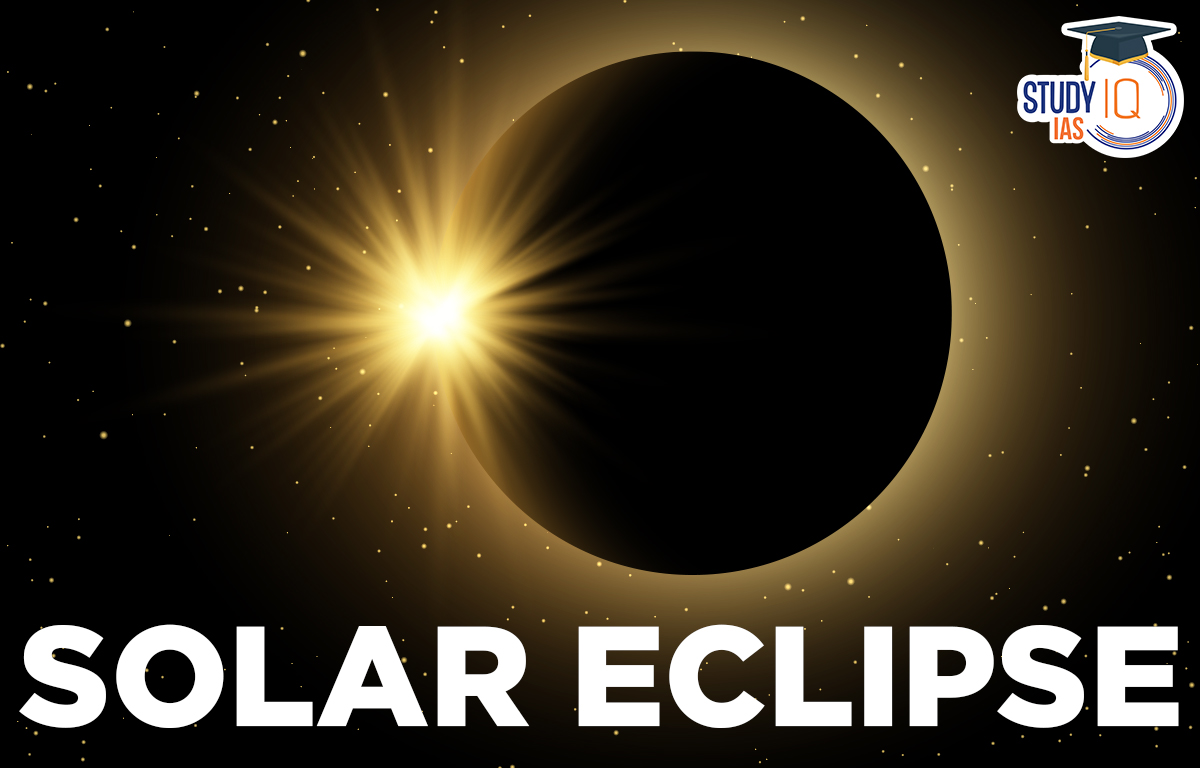Table of Contents
Solar Eclipse 2025: The first solar eclipse of 2025 is set to occur on March 29, 2025. This will be a partial solar eclipse, where the Moon will cover a part of the Sun, creating a stunning celestial event. However, the eclipse will not be visible in India. It will be seen in parts of Europe, North America, Greenland, Iceland, and Northwestern Africa. In this article, we provide details on the solar eclipse timings, its significance, and safe viewing methods.
Surya Grahan 2025 Timings Across the World
1. Solar Eclipse 2025 Time in India (IST)
- Start Time: 2:21 PM IST
- Peak Time: 4:17 PM IST
- End Time: 6:14 PM IST
- Visibility: Not visible in India
2. Solar Eclipse 2025 Time in the USA (EDT)
- Start Time: 4:50 AM EDT
- Peak Time: 6:47 AM EDT
- End Time: 8:43 AM EDT
- Visibility: Partial eclipse visible in the northeastern US
3. Solar Eclipse 2025 Time in Europe (GMT)
- Start Time: 10:00 AM GMT
- Peak Time: 11:03 AM GMT
- End Time: 12:00 Noon GMT
- Visibility: Best seen in northern and western Europe
Where Will the Solar Eclipse Be Visible?
According to NASA, the March 29, 2025 solar eclipse will be visible in the following regions:
- Europe: Most of Northern and Western Europe
- North America: Northeastern parts of the USA and Canada
- Greenland and Iceland
- Northwestern Africa
- Russia: Some regions in the northwest
Why Is the Solar Eclipse Not Visible in India?
The reason the eclipse is not visible in India is due to the Moon’s shadow not passing over the region. The partial eclipse will occur over parts of Europe and North America, while India remains outside the path of visibility.
Solar Eclipse Meaning
A solar eclipse occurs when the Moon passes between the Sun and Earth, temporarily blocking all or part of the Sun’s light. This happens only during a new moon when the Sun, Moon, and Earth are aligned in a straight or nearly straight line.
Solar eclipses are rare events and are usually viewed as fascinating astronomical phenomena. However, it’s important to view them safely by using proper eye protection or indirect viewing methods, as looking directly at the Sun can cause permanent eye damage. Solar Eclipse is an important part of Current Affairs which is an important subject in the UPSC Syllabus. Students can also go for the UPSC Mock Test to get more accuracy in their preparations.
Solar Eclipse Types
When the moon is full and the sun and earth are in a straight line, there will be a solar eclipse. There are primarily four types of solar eclipses.

Annular Solar Eclipse
It typically happens when the moon is the furthest away from the Earth. As a result, the moon seems tiny and partially blocks the sun. The sun is still visible, though. As a result, it looks externally like a golden ring. About 12 minutes or longer pass during the annular solar eclipse. It might also resemble a total solar eclipse. However, the moon is too small to block out the sun.
The umbra’s tip won’t touch the earth if the moon is positioned at a greater distance. The antumbra descends to the surface of the earth during this kind of eclipse. Everyone on Earth in this area may therefore see the ring-like structure encircling the moon.
Total Solar Eclipse
Only a small portion of the earth can see it. The diameter of the earth in this phenomenon is around 400 times greater than that of the moon. However, the distance varies from one eclipse to the next.
The overall view of the sun from Earth is then completely obscured by the new moon. In between 18 months, this occurs. The moon also makes numerous kinds of shadows. Umbra and penumbra are these shadows. The shadow’s deepest shade is referred to as the umbra in this context. Additionally, a penumbra, or a lighter shadow, surrounds it. The sunlight is only partially obstructed in the penumbra.
You must be in the path of the umbra to see the solar eclipse. The sun’s disc will then start to dwindle and take on the form of a crescent. The sun is fully hidden by the moon’s shadow. As a result, the total eclipse only lasts a short time. The longest total eclipse that has yet to occur only lasted up to 7 minutes.
Partial Solar Eclipse
Additionally, the penumbra passes overhead when the partial solar eclipse begins. When the sun, moon, and earth are not perfectly aligned, this occurs. Because of this, the moon’s shadow leaves a small portion of the sun visible.
The penumbra zone, which is located farther from the poles, prevents a comprehensive view of the eclipse. Only a little portion of the sun is still protected by this. It implies that to see the partial effects of the solar eclipse, you must go closer to the path.
Hybrid Solar Eclipse
Rare, transitions between total and annular as Moon’s shadow moves.
How Often Do Solar Eclipses Occur?
- A new moon (Sun and Moon aligned) happens every 29.5 days.
- Eclipses occur 2-5 times a year, not every month.
- The Moon’s orbit is tilted 5 degrees relative to Earth’s orbit.
- Moon’s shadow usually misses Earth due to its tilt.
- Eclipses only occur when the new moon aligns with the Moon’s nodes (intersection points of Earth’s and Moon’s orbital planes).
Why Are Total Solar Eclipses Rare?
- Total eclipses happen every 18 months on average.
- A specific location sees a total eclipse only once every 400 years.
- Only visible within the umbra (darkest part) of the Moon’s shadow, which is very small.
- The umbral path covers less than 1% of Earth’s surface.
- 70% of Earth is water and half of land is uninhabited, reducing visibility.
Solar Eclipse Effects
Depending on the nature and location, an eclipse can have several impacts. These are some noteworthy impacts of the solar eclipse, though. The earth’s surface ozone level decreases as the eclipse nears its culmination. Additionally, the earth’s atmosphere cools. Ozone levels are reported to drop by 30% to 60%.
During the solar eclipse, the earth’s temperature also fluctuates. Along with that, there is a substantial change in the humidity and wind speed. Additionally, total solar eclipse areas have high magnitude ranges for their magnitudes.
Solar Eclipse UPSC
One of the important celestial phenomena is the solar eclipse. During this, the earth, moon, and sun all revolve in a straight line. While orbiting the Earth, the moon passes in front of the sun. As a result, the moon obscures the sun, casting an earthly shadow. Solar eclipses come in three different varieties: annular, partial, and total. As a result, the eclipse causes a drop in temperature, a rise in magnitude, and a decrease in ozone levels. During the solar eclipse, temperatures and humidity levels drop as well. Students can read all the details related to UPSC by visiting the official website of StudyIQ UPSC Online Coaching.


 Places in News for UPSC 2025 for Prelims...
Places in News for UPSC 2025 for Prelims...
 Evaporative Demand: Main Drivers and its...
Evaporative Demand: Main Drivers and its...
 Indus Valley Civilization, History, Phas...
Indus Valley Civilization, History, Phas...





















